
The Enchanting Beauty of Lake Bled
Discover Lake Bled: Slovenia's Emerald Jewel with its iconic island church, medieval castle, and breathtaking alpine scenery.
Lake Bled, nestled in the Julian Alps of Slovenia, is a true natural gem. This emerald-green lake is famous for its picturesque island, which houses the charming Bled Church. Surrounded by lush forests and overlooked by the medieval Bled Castle, the lake is a perfect blend of scenic beauty and rich history. The serene waters of Lake Bled invite visitors to take a traditional 'pletna' boat ride to the island. Once on the island, you can ring the church bell for good luck. The area around the lake offers numerous walking and cycling paths, providing stunning views from every angle. Nearby, Bled Castle stands tall on a cliff, offering panoramic views of the lake and surrounding mountains. In addition to its natural and historical attractions, Lake Bled is also known for its culinary delights. The famous Bled cream cake, a delicious local dessert, is a must-try. Whether you are looking for adventure, relaxation, or a taste of Slovenian culture, Lake Bled has something to offer for everyone.
Local tips in Lake Bled
- Visit early in the morning or late in the afternoon to avoid crowds and enjoy the serene beauty of the lake.
- Take a 'pletna' boat to Bled Island for a unique experience and a chance to ring the wishing bell.
- Hike up to Bled Castle for spectacular views and a glimpse into the region's history.
- Try the traditional Bled cream cake at one of the local cafes.
- Rent a bike to explore the scenic trails around the lake.
The Enchanting Beauty of Lake Bled
Lake Bled, nestled in the Julian Alps of Slovenia, is a true natural gem. This emerald-green lake is famous for its picturesque island, which houses the charming Bled Church. Surrounded by lush forests and overlooked by the medieval Bled Castle, the lake is a perfect blend of scenic beauty and rich history. The serene waters of Lake Bled invite visitors to take a traditional 'pletna' boat ride to the island. Once on the island, you can ring the church bell for good luck. The area around the lake offers numerous walking and cycling paths, providing stunning views from every angle. Nearby, Bled Castle stands tall on a cliff, offering panoramic views of the lake and surrounding mountains. In addition to its natural and historical attractions, Lake Bled is also known for its culinary delights. The famous Bled cream cake, a delicious local dessert, is a must-try. Whether you are looking for adventure, relaxation, or a taste of Slovenian culture, Lake Bled has something to offer for everyone.
When is the best time to go to Lake Bled?
Iconic landmarks you can’t miss
Bled Castle
Explore Bled Castle, a historical gem offering stunning views of Lake Bled and rich cultural experiences in the heart of Slovenia.
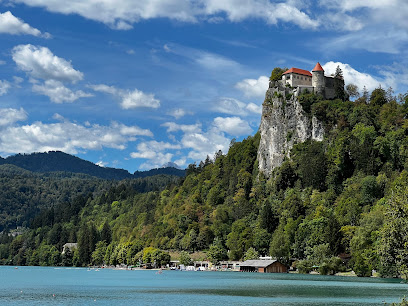
The Heart of Bled
Experience the breathtaking beauty of Lake Bled, a serene glacial lake in Slovenia, featuring stunning views, rich history, and outdoor adventures.
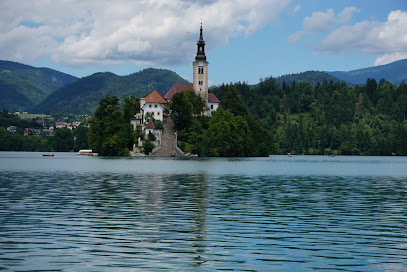
Mala Osojnica
Experience spectacular views and nature's beauty at Mala Osojnica, a scenic gem in Bled, Slovenia.
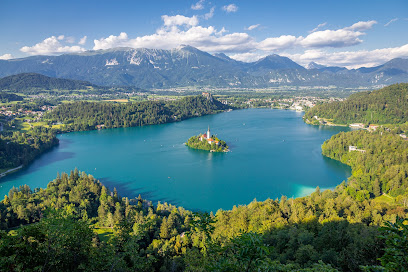
Wooden house on the lake
Discover the captivating Wooden House on the Lake in Bled, Slovenia, surrounded by stunning mountain views and serene waters, perfect for nature lovers and photographers.
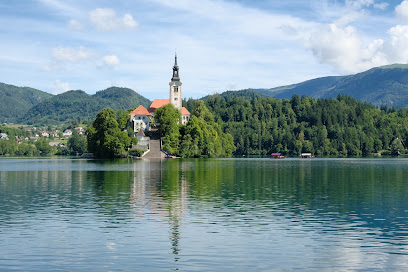
Provost's House
Explore the Provost's House, a captivating historical landmark in Bled, Slovenia, offering stunning views and rich cultural heritage.
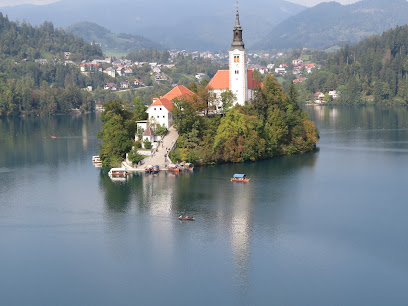
Bled Viewpoint
Experience the breathtaking beauty of Lake Bled from the stunning Bled Viewpoint, a historical gem offering panoramic views of nature's masterpiece.
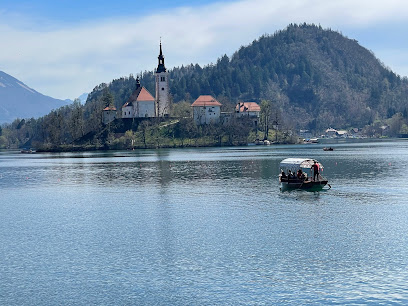
Baroque Statue of M. Magdalene
Discover the exquisite Baroque Statue of M. Magdalene in Bled, a masterpiece of art surrounded by stunning landscapes and rich cultural heritage.
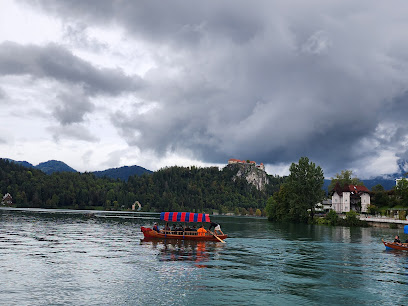
Unmissable attractions to see
Planica Nordic Centre
Experience the thrill of winter sports in the scenic Planica Nordic Centre, Slovenia's premier destination for adventure and breathtaking alpine views.
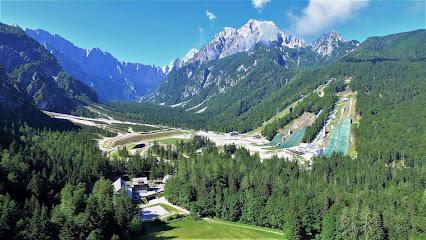
The Heart of Bled
Experience the beauty of Lake Bled, an enchanting destination where stunning landscapes meet rich cultural heritage in Slovenia.
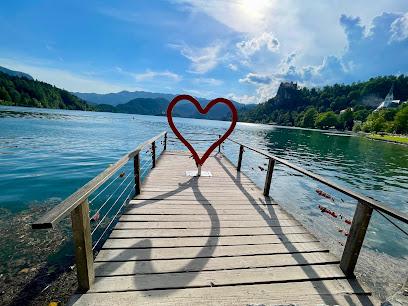
Exhibition and Convention Centre
Discover a vibrant hub for exhibitions and conventions in Ljubljana, where culture and commerce meet in an inspiring setting.
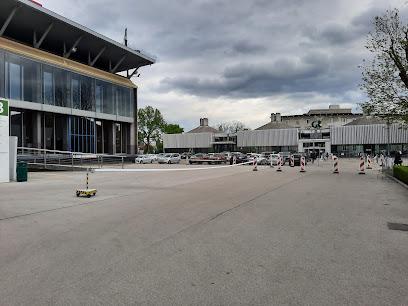
Park Špica
Explore the serene beauty of Park Špica, a must-visit urban oasis along the Ljubljanica River in Ljubljana, perfect for relaxation and scenic views.
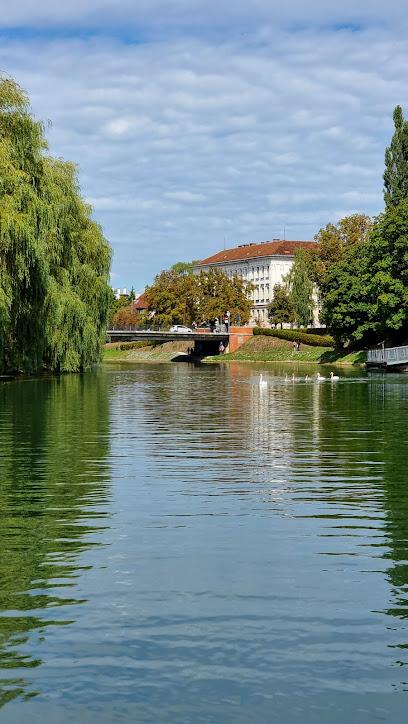
Laghi di Fusine
Discover the serene beauty of Laghi di Fusine in Tarvisio, where shimmering lakes meet majestic mountains for an unforgettable nature experience.
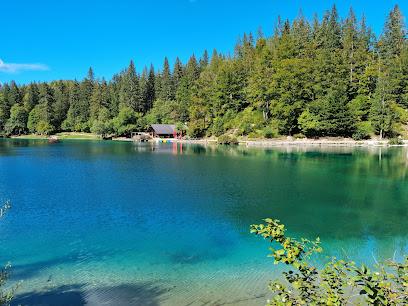
ŠPICA CAFFE | kaval Group
Experience the perfect blend of coffee, ambiance, and scenic views at ŠPICA CAFFE in Ljubljana, your ideal stop for relaxation and local flavors.

Razgledna točka
Discover the stunning vistas of Razgledna točka, a must-see viewpoint in Zasip, Slovenia, offering unforgettable panoramic landscapes.
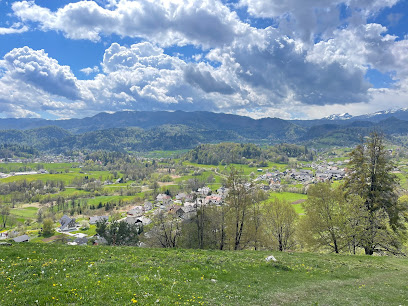
Park ob obali Blejskega jezera
Discover tranquility and breathtaking views at Park ob obali Blejskega jezera, a stunning lakeside park in Bled, Slovenia, perfect for nature lovers.
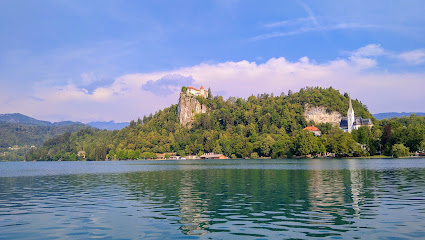
Matija's Viewpoint
Explore the breathtaking views and serene hiking trails at Matija's Viewpoint in Bled, Slovenia, a must-visit for nature lovers and adventure seekers.
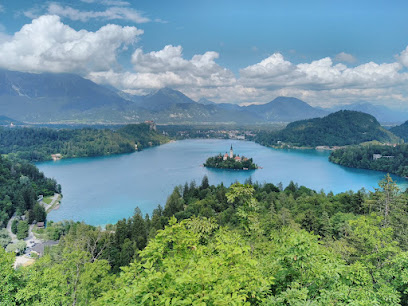
Mala Osojnica - First View Point
Discover the breathtaking beauty of Mala Osojnica, a serene hiking area in Bled, Slovenia, offering stunning views of the iconic Lake Bled.
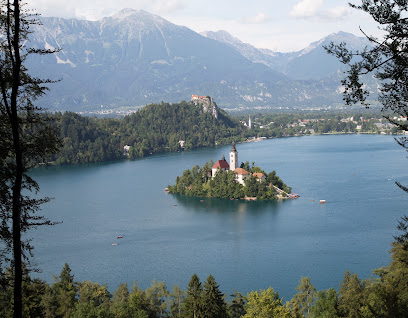
Ojstrica Trailhead
Explore the breathtaking views and serene landscapes at Ojstrica Trailhead, a premier hiking destination near Lake Bled, Slovenia.
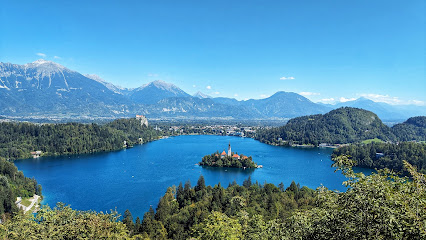
Bar Nordijski center Planica
Discover the charm of Bar Nordijski Center Planica, where stunning alpine views meet delightful local flavors in a cozy setting.

Gradišče
Explore the enchanting landscapes, rich culture, and warm hospitality of Gradišće, Slovenia's hidden gem for unforgettable travel experiences.
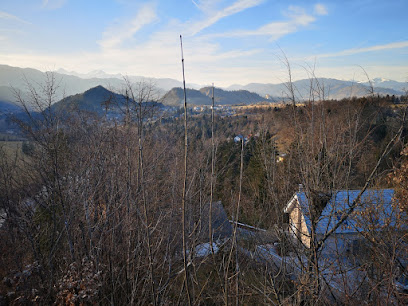
Šmarna Gora District
Discover the stunning natural beauty and hiking trails of Šmarna Gora District, a perfect escape close to Ljubljana, Slovenia.

Prešeren Square, Ljubljana
Discover the vibrant atmosphere and historical significance of Prešeren Square in Ljubljana, Slovenia's cultural heart, surrounded by stunning architecture.
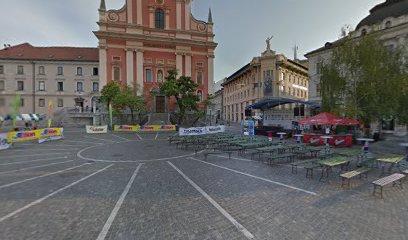
Essential places to dine
Oštarija Peglez'n
Discover authentic Slovenian cuisine at Oštarija Peglez'n in Bled – where tradition meets flavor in every dish.
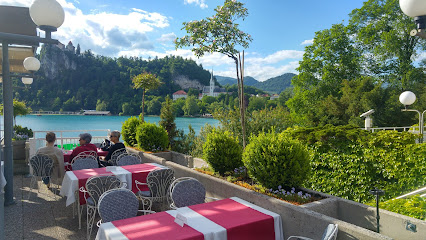
Pizzeria Rustika
Experience authentic Italian cuisine at Pizzeria Rustika in Bled – where every pizza is crafted with love and fresh ingredients.
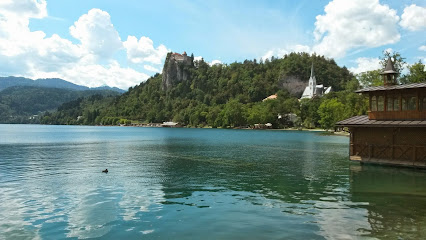
Spica - Bar And Restaurant
Discover authentic Slovenian cuisine at Spica - Bar and Restaurant in Bled, offering delicious dishes amidst stunning views.
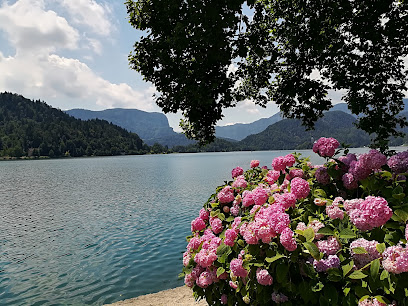
Gostilna Pri Planincu
Experience authentic Slovenian cuisine in Bled at Gostilna Pri Planincu – where tradition meets breathtaking views.
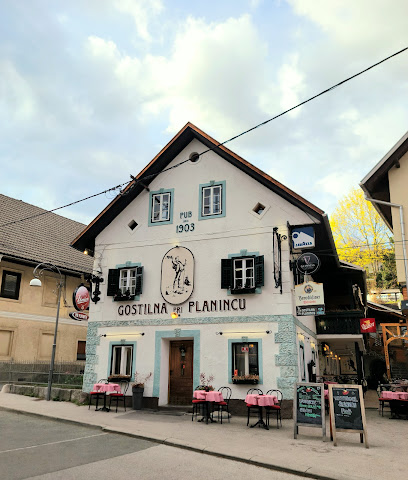
Vila Preseren
Experience authentic Slovenian cuisine with stunning views at Vila Preseren - a perfect retreat by Lake Bled.
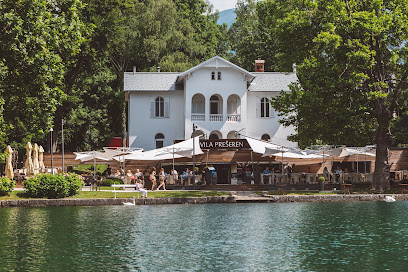
Restavracija Sova Bled
Discover the essence of Slovenian cuisine at Restavracija Sova Bled - where culinary excellence meets breathtaking views.
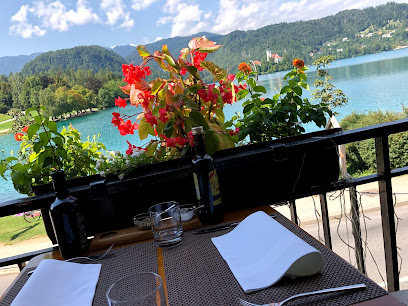
Public & Vegan Kitchen Bled
Discover the vibrant flavors of plant-based cuisine at Public & Vegan Kitchen Bled - where great food meets stunning views.
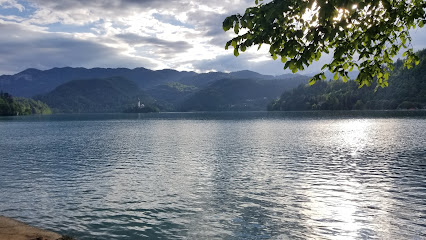
Mega Burger Bled
Discover the ultimate burger experience at Mega Burger Bled – where quality meets flavor in the heart of Slovenia's stunning landscape.
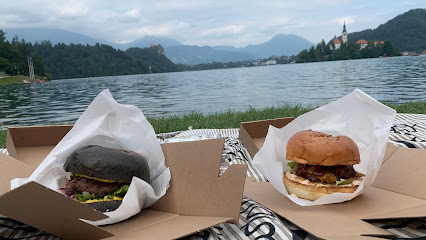
Old Cellar Bled
Experience authentic Slovenian cuisine paired with exquisite wines at Old Cellar Bled—where every meal is a delightful journey.
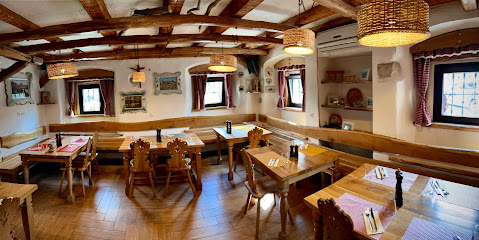
Gostilna Murka
Experience authentic Slovenian cuisine at Gostilna Murka in Bled – where tradition meets flavor in a cozy setting.
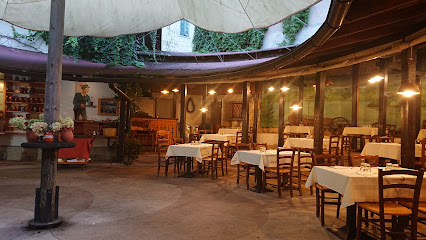
Gostilna Kurej
Experience authentic Slovenian cuisine at Gostilna Kurej in Bled – where local flavors meet stunning scenery.
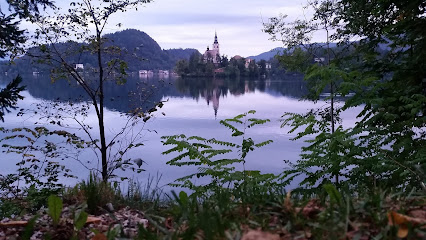
Pizzeria Gallus
Discover Pizzeria Gallus in Bled – where authentic Italian pizza meets stunning alpine views for an unforgettable dining experience.
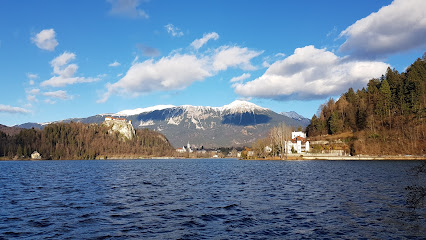
Restavracija Zaka Camping Bled
Experience authentic Slovenian flavors at Restavracija Zaka Camping in Bled - where great food meets stunning natural beauty.
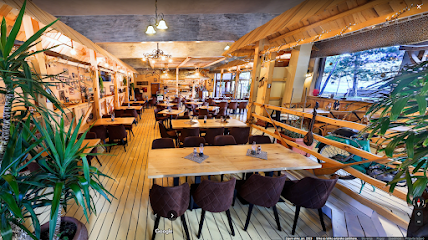
Grajska plaža Restaurant
Experience the exquisite flavors of Slovenia at Grajska plaža Restaurant by Lake Bled, where stunning views meet culinary excellence.
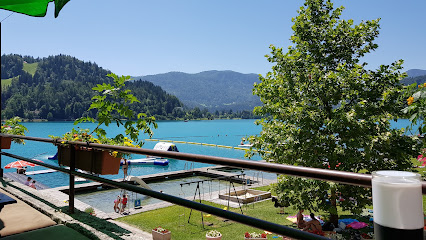
Bled Castle Restaurant
Experience exquisite cuisine and stunning views at Bled Castle Restaurant, perched above beautiful Lake Bled in Slovenia.

Markets, malls and hidden boutiques
Confectionery Zima
Explore the sweet side of Bled at Confectionery Zima, where delicious pastries and rich coffee create unforgettable moments.
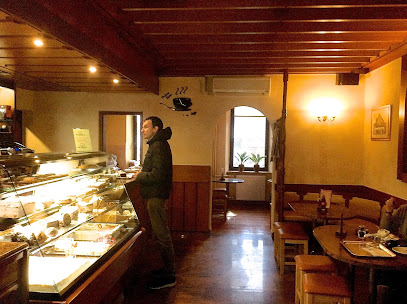
Market by the Lake
Discover a lakeside bistro in Bled, Slovenia, where local flavors meet stunning views in a cozy and inviting atmosphere.
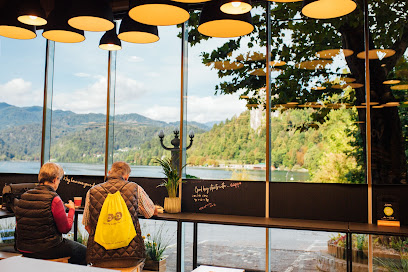
Kgz Gozd Bled z.o.o.
Discover local flavors and artisanal goods at Kgz Gozd Bled z.o.o., a delightful store in the heart of Bled, Slovenia.
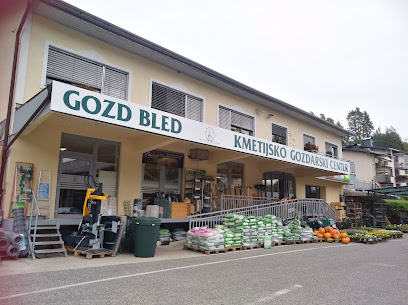
FromSlovenia Bled
Explore FromSlovenia Bled: Your ultimate destination for unique gifts, local chocolates, and gourmet delights in the heart of Bled, Slovenia.
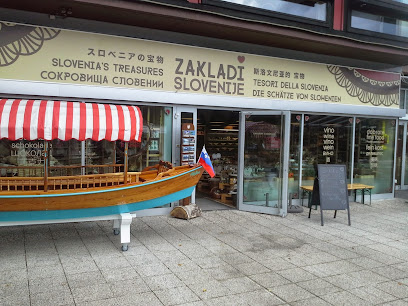
Fauna Fly Fishing Shop Bled, Slovenia
Explore the best fly fishing shop in Bled, Slovenia, where quality gear meets expert advice for unforgettable fishing adventures.

Poslovni sistem Mercator d.d.
Discover the essential grocery shopping experience in Bled at Poslovni sistem Mercator d.d., where local flavors meet convenience.
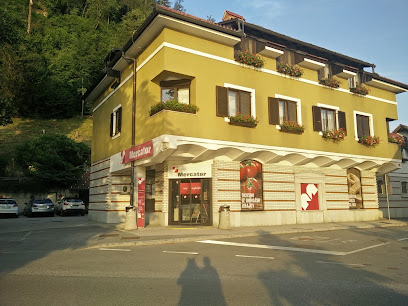
M.a.d. d.o.o., Bled
Shop in Bled: Quality Clothing and Unique Finds Await at M.a.d. d.o.o., Your Go-To Store for Fashion and More!
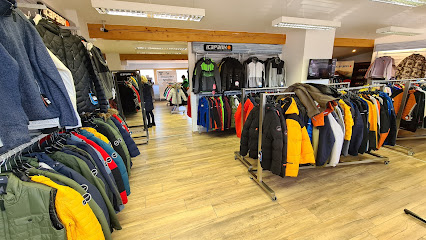
Koala sport - trgovina s športno opremo
Explore the great outdoors of Bled with top-quality gear from Koala Sport, your trusted sporting goods store in Slovenia.

trgovina Pik Pok Bled
Explore Pik Pok Bled, a charming gift shop that offers a unique selection of toys, paper goods, and souvenirs to capture your Slovenian adventure.
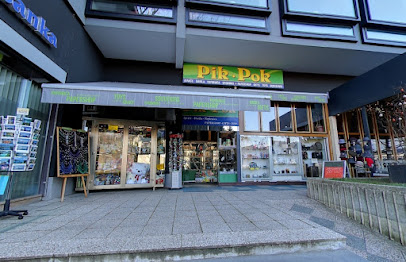
Shopping Center Bled
Discover a unique shopping experience in Bled, Slovenia, where retail meets stunning natural beauty in a vibrant shopping center.
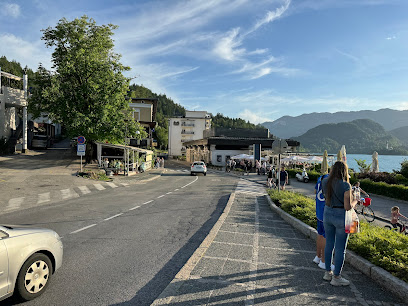
Natour Bled & Vintgar Gorge shuttle & Beer shop Bled
Discover the breathtaking Vintgar Gorge and enjoy local craft beers at Natour Bled - a perfect blend of adventure and relaxation in Slovenia.

Mercator
Explore Bled's Mercator Grocery Store for local flavors, fresh produce, and travel essentials, all in a warm and welcoming setting.
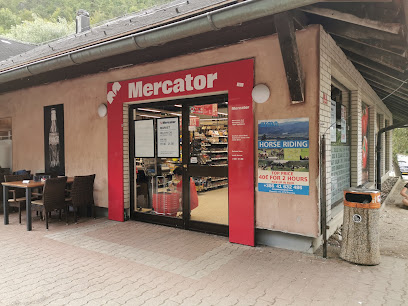
Mercator Mlino Bled
Discover local flavors at Mercator Mlino Bled, your go-to grocery store in the heart of Slovenia's stunning Bled region.

I love BLED
Explore I Love Bled, your go-to souvenir store for unique mementos celebrating the beauty and culture of Bled, Slovenia.
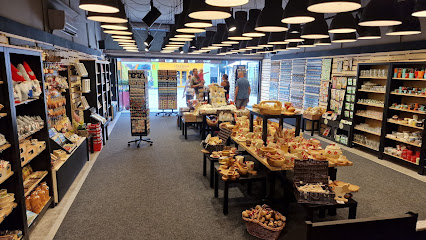
Galerija Mikame
Explore Galerija Mikame in Bled for unique handmade gifts that capture Slovenia's artistic spirit and charm.
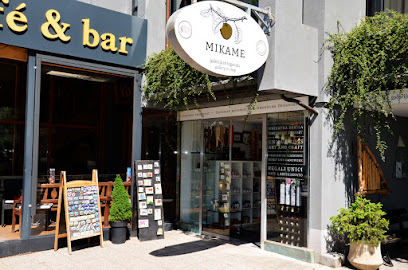
Essential bars & hidden hideouts
Old Cellar Bled
Experience the best of Slovenian cuisine and exquisite wines at Old Cellar Bled, a true culinary treasure in the heart of Bled.
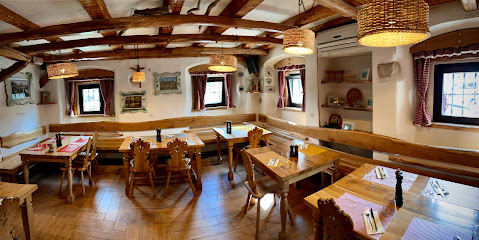
Gostilna Murka
Experience authentic Slovenian cuisine in the heart of Bled at Gostilna Murka - a culinary gem offering local flavors and warm hospitality.
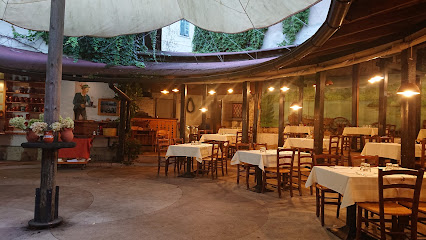
Art Cafe Bar
Experience the best of Bled at Art Cafe Bar, where delightful cuisine meets stunning views in a vibrant atmosphere.
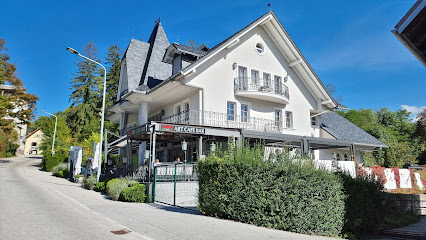
Devil's Cafe & Bar
Experience the vibrant atmosphere of Devil's Cafe & Bar in Bled, where delicious drinks and a cozy ambiance await every visitor.
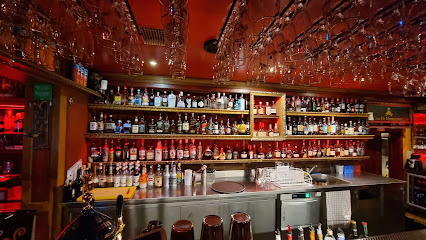
bar Bled
Discover Bar Bled: A vibrant bar in the heart of Bled, perfect for unwinding with drinks and enjoying the lively atmosphere.
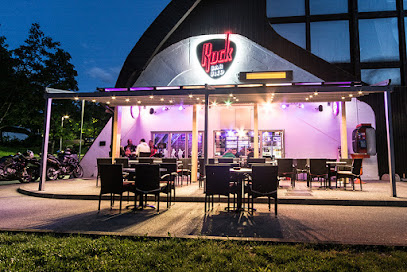
Kult Pub Bled
Experience the vibrant atmosphere of Kult Pub Bled, a perfect spot for drinks, snacks, and socializing in the heart of Bled.
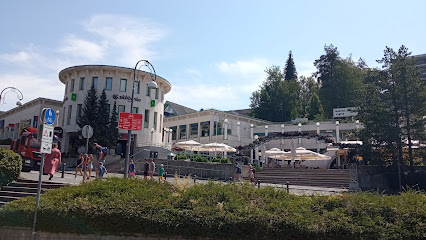
Lounge bar Plaža
Unwind at Lounge Bar Plaža in Bled, Slovenia, where delicious desserts meet refreshing drinks in a picturesque setting.
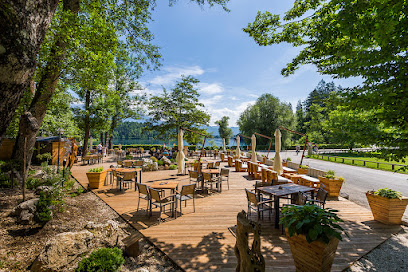
Tropical bar
Discover the vibrant Tropical Bar in Bled, Slovenia, where refreshing drinks meet stunning views and a lively atmosphere.
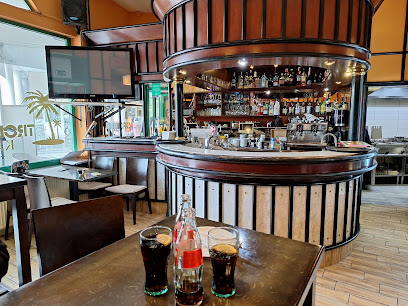
Aško
Experience the vibrant nightlife of Bled at Aško, where cozy ambiance meets a wide selection of drinks for an unforgettable evening.

Maximal Lounge Bar & Good Food
Experience the vibrant ambiance and delightful cuisine at Maximal Lounge Bar & Good Food in Bled, Slovenia, a must-visit for every traveler.
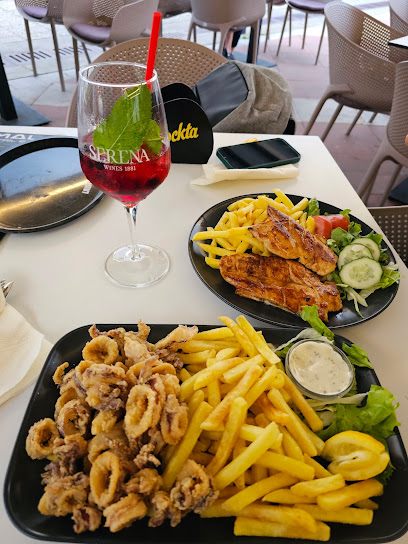
PUB BLED TROHA
Discover the vibrant nightlife of Bled at Pub Bled Troha, a local favorite for drinks and socializing in a charming setting.
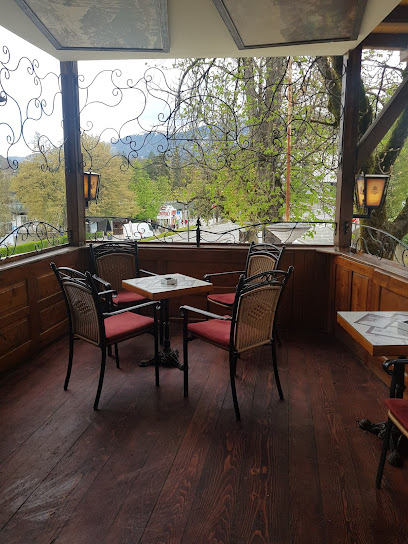
Kava Bar Hlapon / Lakeview Bar
Experience the perfect blend of stunning lake views and delicious treats at Kava Bar Hlapon in Bled, Slovenia.
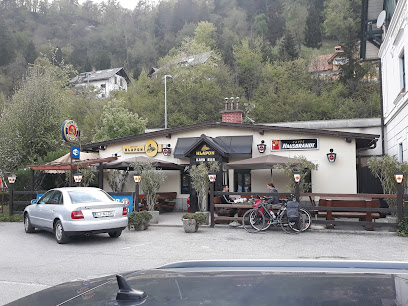
Stop Robert Nemeček s.p.
Experience the vibrant atmosphere and refreshing drinks at Stop Robert Nemeček s.p. in the heart of beautiful Bled, Slovenia.
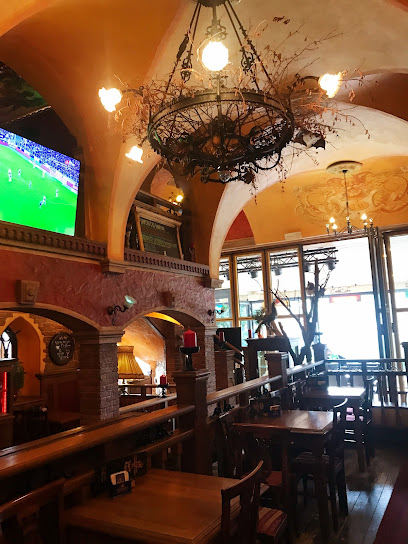
Vinoteka Zdravljica
Discover the charm of Bled at Vinoteka Zdravljica, a wine bar offering exquisite local and international wines in a cozy atmosphere.
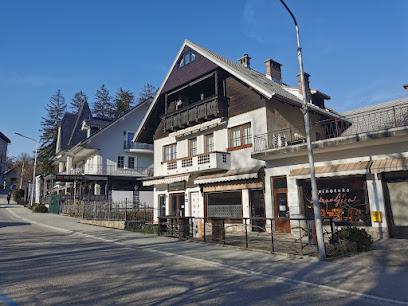
À propos Cocktail Bar
Discover the vibrant atmosphere and exquisite cocktails at À propos Cocktail Bar in Bled, where every sip is a celebration of flavor and hospitality.
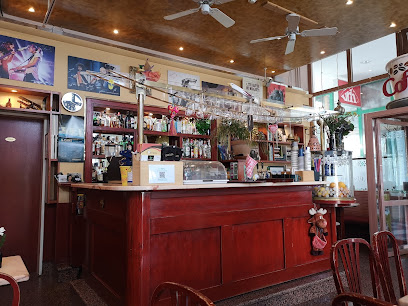
Local Phrases about Lake Bled
-
- HelloZdravo
[Z-dra-vo] - GoodbyeNasvidenje
[Na-svi-de-nje] - YesJa
[Ya] - NoNe
[Ne] - Please/You're welcomeProsim
[Pro-sim] - Thank youHvala
[Hva-la] - Excuse me/SorryOprostite
[O-pro-sti-te] - How are you?Kako ste?
[Ka-ko ste] - Fine. And you?V redu. In vi?
[V re-du. In vi] - Do you speak English?Govorite angleško?
[Go-vo-ri-te an-gle-shko] - I don't understandNe razumem
[Ne ra-zu-mem]
- HelloZdravo
-
- I'd like to see the menu, pleaseŽelel bi videti jedilnik, prosim
[Zhe-lel bi vi-de-ti je-di-l-nik, pro-sim] - I don't eat meatNe jem mesa
[Ne yem me-sa] - Cheers!Na zdravje!
[Na zdra-vye] - I would like to pay, pleaseŽelel bi plačati, prosim
[Zhe-lel bi pla-cha-ti, pro-sim]
- I'd like to see the menu, pleaseŽelel bi videti jedilnik, prosim
-
- Help!Pomoč!
[Po-moch] - Go away!Pojdi stran!
[Poy-di stran] - Call the Police!Pokličite policijo!
[Pok-li-chi-te po-li-tsi-yo] - Call a doctor!Pokličite zdravnika!
[Pok-li-chi-te zdra-vni-ka] - I'm lostIzgubil sem se
[Iz-gu-bil sem se] - I'm illBolim
[Bo-lim]
- Help!Pomoč!
-
- I'd like to buy...Želel bi kupiti...
[Zhe-lel bi ku-pi-ti] - I'm just lookingSamo si ogledujem
[Sa-mo si o-gle-du-yem] - How much is it?Koliko stane?
[Ko-li-ko sta-ne] - That's too expensiveTo je predrago
[To ye pre-da-go] - Can you lower the price?Lahko znižate ceno?
[La-hko zni-za-te ce-no]
- I'd like to buy...Želel bi kupiti...
-
- What time is it?Koliko je ura?
[Ko-li-ko ye u-ra] - It's one o'clockJe ena ura
[Ye e-na u-ra] - Half past (10)Pol desetih
[Pol de-se-tih] - MorningJutro
[Yu-tro] - AfternoonPopoldne
[Po-pol-dne] - EveningVečer
[Ve-cher] - YesterdayVčeraj
[V-che-raj] - TodayDanes
[Da-nes] - TomorrowJutri
[Yu-tri] - 1Ena
[E-na] - 2Dva
[Dva] - 3Tri
[Tri] - 4Štiri
[Shtiri] - 5Pet
[Pet] - 6Šest
[Shest] - 7Sedem
[Se-dem] - 8Osem
[O-sem] - 9Devet
[De-vet] - 10Deset
[De-set]
- What time is it?Koliko je ura?
-
- Where's a/the...?Kje je ...?
[Kye ye] - What's the address?Kakšen je naslov?
[Kak-shen ye nas-lov] - Can you show me (on the map)?Mi lahko pokažete (na zemljevidu)?
[Mi la-hko po-ka-zhe-te (na zem-lje-vi-du)] - When's the next (bus)?Kdaj je naslednji (avtobus)?
[Kdaj ye na-sled-nji (av-to-bus)] - A ticket (to ....)Vstopnica (do ...)
[Vsto-pni-tsa (do)]
- Where's a/the...?Kje je ...?
History of Lake Bled
-
Lake Bled, located in the Julian Alps of Slovenia, has been a significant area since prehistoric times. Archaeological evidence suggests that the region was inhabited as far back as the Mesolithic age. The earliest known settlers were the Illyrians, followed by the Celts, who left their mark on the local culture and traditions.
-
The medieval period saw the construction of the iconic Bled Castle, perched on a rocky outcrop overlooking the lake. Built around 1011 by the German King Henry II, the castle served as a strategic stronghold and administrative center. It has been expanded and renovated over the centuries, reflecting various architectural styles, including Romanesque, Gothic, and Renaissance.
-
Bled Island, located in the middle of Lake Bled, is home to the Church of the Assumption, a pilgrimage site with a long history dating back to the 9th century. Legend has it that the church's famous 'wishing bell' grants the wishes of those who ring it. The current Baroque structure was built in the 17th century, replacing earlier versions destroyed by earthquakes.
-
In the mid-19th century, Swiss hydropath Arnold Rikli recognized Lake Bled's potential as a health resort. He established a spa and health center, promoting the area's natural beauty, fresh air, and thermal springs. This development marked the beginning of Bled's transformation into an international tourist destination.
-
During the 20th century, Lake Bled was affected by the turbulent events of both World Wars. In World War I, it was part of the Austro-Hungarian Empire, and later, it became part of the Kingdom of Serbs, Croats, and Slovenes (later Yugoslavia) after the war. During World War II, the region was occupied by Axis powers, and Bled served as a vacation spot for high-ranking Nazi officials.
-
After World War II, Bled became part of the Socialist Federal Republic of Yugoslavia. The town continued to grow as a tourist destination, attracting visitors from all over the world. Following Slovenia's independence in 1991, Bled embraced its role as a premier tourist destination, known for its natural beauty, outdoor activities, and rich cultural heritage.
Lake Bled Essentials
-
Lake Bled is located in northwestern Slovenia, approximately 55 kilometers from the capital city, Ljubljana. The nearest international airport is Ljubljana Jože Pučnik Airport (LJU), which is about a 30-minute drive from Bled. From the airport, you can take a shuttle service, a taxi, or rent a car to reach Lake Bled. There are also direct bus connections from Ljubljana to Bled, and the journey takes around 1 hour. Alternatively, you can take a train from Ljubljana to Lesce-Bled station, which is 4 kilometers from the lake, and then a short bus or taxi ride to the lake itself.
-
Lake Bled is a compact area, and many attractions are within walking distance. For longer distances, local buses operate throughout the town and connect to nearby villages and other tourist spots. Taxis are available but can be more expensive. Renting a bike is a popular option for tourists, allowing you to explore the area at your own pace. Additionally, traditional Pletna boats offer a scenic way to reach Bled Island.
-
The official currency in Slovenia is the Euro (EUR). Credit and debit cards are widely accepted in hotels, restaurants, and shops in Bled. However, it is advisable to carry some cash for smaller establishments and transportation services. ATMs are readily available in Bled town center for cash withdrawals.
-
Lake Bled is generally a very safe destination for tourists. However, it is always wise to take standard precautions such as keeping an eye on your belongings, especially in crowded areas. There are no specific high-crime areas targeting tourists, but it is advisable to avoid isolated areas late at night. Pickpocketing can occur, so stay vigilant in busy places.
-
In case of emergency, dial 112 for immediate assistance, which covers police, fire brigade, and medical emergencies. The nearest hospital is located in Jesenice, about 20 kilometers from Bled. For minor health issues, there are several pharmacies in Bled where you can purchase over-the-counter medications. It is recommended to have travel insurance that covers medical emergencies.
-
Fashion: Do dress comfortably and in layers, as the weather can change quickly. Avoid overly revealing clothing. Religion: Do respect local customs, especially when visiting religious sites like Bled Island's Church of the Assumption. Public Transport: Do be polite and offer your seat to elderly passengers. Don't eat or drink on public transport. Greetings: Do greet people with a friendly 'Dober dan' (Good day) and a handshake. Eating & Drinking: Do try local dishes like Bled cream cake (kremšnita). Don't rush meals; dining is a leisurely activity.
-
To experience Lake Bled like a local, visit the local farmers' market held on Wednesdays and Saturdays to buy fresh produce and homemade products. Engage with locals who are often friendly and willing to share stories about the area. Don't miss a traditional Pletna boat ride to Bled Island, where you can ring the wishing bell in the church for good luck. For a unique experience, take a walk around the lake in the early morning or late evening to enjoy the serene atmosphere.
Nearby Cities to Lake Bled
-
Things To Do in Bohinj
-
Things To Do in Kranjska Gora
-
Things To Do in Škofja Loka
-
Things To Do in Klagenfurt
-
Things To Do in Kamnik
-
Things To Do in Ljubljana
-
Things To Do in Nova Gorica
-
Things To Do in Postojna
-
Things To Do in Sežana
-
Things To Do in Velenje
-
Things To Do in Trieste
-
Things To Do in Celje
-
Things To Do in Koper
-
Things To Do in Izola
-
Things To Do in Piran










